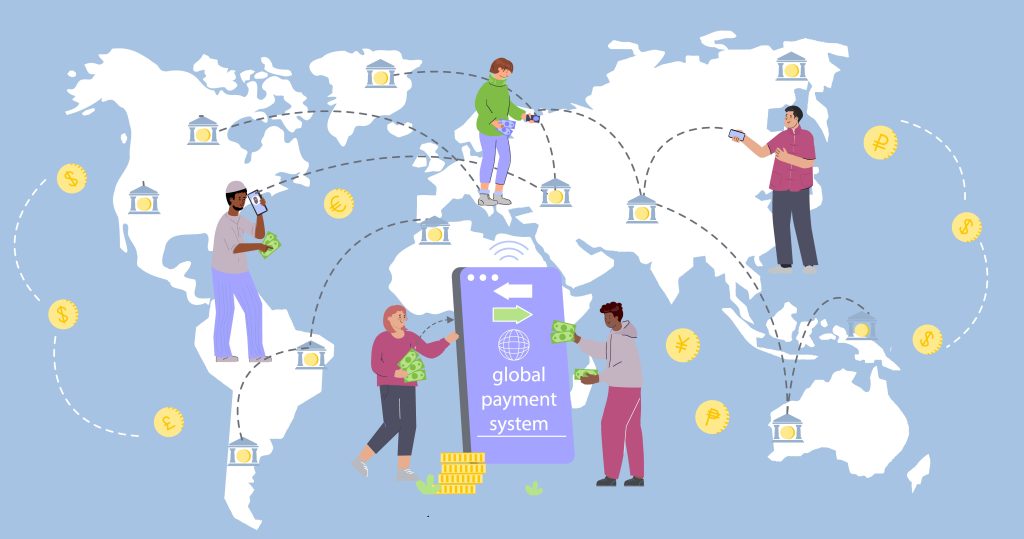The Impact of Digital Currencies on Global Remittances and Cross-Border Payments

In recent years, digital currencies have emerged as a transformative force in the financial sector, especially in the realm of global remittances and cross-border payments. As traditional financial systems grapple with inefficiencies and high costs, digital currencies offer a promising alternative. This shift is not just reshaping how money is transferred internationally but is also influencing the burgeoning field of crypto prop trading. Let’s delve into the multifaceted impact of digital currencies on global remittances and cross-border payments.
Traditional Remittances and Their Challenges
Traditional methods of sending money across borders, such as wire transfers and money transfer services like Western Union, have long been plagued by several issues. These include high transaction fees, slow processing times, and the need for intermediaries, which add layers of complexity and cost. For many, especially in developing countries, the costs associated with these services can be prohibitively expensive, eating into the funds that recipients need for essential expenses.
Enter Digital Currencies
Digital currencies, particularly cryptocurrencies like Bitcoin, Ethereum, and stablecoins, are revolutionizing the way money is sent and received globally. By leveraging blockchain technology, these currencies facilitate direct, peer-to-peer transactions without the need for intermediaries. This not only reduces costs but also significantly speeds up the transfer process.
Lower Costs and Increased Efficiency
One of the most significant benefits of digital currencies in the realm of remittances is the reduction in transaction fees. Traditional money transfer services can charge anywhere from 5% to 10% of the transaction amount, whereas digital currency transfers often cost a fraction of that, sometimes less than 1%. This is a game-changer for individuals who rely on remittances from family members abroad.
Moreover, digital currencies enable near-instantaneous transfers. Unlike traditional methods that can take several days to process, a cryptocurrency transaction can be completed in a matter of minutes, regardless of the amount being transferred or the destination.
Accessibility and Financial Inclusion
Digital currencies also play a crucial role in enhancing financial inclusion. In many parts of the world, particularly in developing countries, a significant portion of the population is unbanked, meaning they do not have access to traditional banking services. Digital currencies can bridge this gap, allowing anyone with a smartphone to send and receive money, access financial services, and participate in the global economy.
Crypto Prop Trading: A New Frontier
The rise of digital currencies has also given birth to new financial opportunities, such as crypto prop trading. Prop trading, short for proprietary trading, involves financial firms trading assets, including cryptocurrencies, using their own capital to generate profits. As digital currencies become more integrated into global financial systems, crypto prop trading is becoming increasingly popular.
Crypto prop trading firms leverage sophisticated algorithms and trading strategies to capitalize on the volatility and liquidity of digital currencies. This not only provides substantial returns for these firms but also contributes to the overall liquidity and stability of the cryptocurrency market. The growth of crypto prop trading is a testament to the increasing legitimacy and acceptance of digital currencies in mainstream finance.
Overcoming Regulatory Hurdles
While the advantages of digital currencies are clear, their adoption is not without challenges. Regulatory uncertainty remains a significant barrier, as governments and financial institutions worldwide grapple with how to integrate digital currencies into existing legal frameworks. Concerns about money laundering, fraud, and market manipulation need to be addressed to ensure the safe and sustainable growth of digital currencies.
However, progress is being made. Countries like El Salvador have already adopted Bitcoin as legal tender, and many other nations are exploring the development of central bank digital currencies (CBDCs). These efforts are paving the way for a more regulated and secure digital currency ecosystem.
The Future of Global Payments
The integration of digital currencies into global remittances and cross-border payments is just the beginning. As technology continues to evolve, we can expect even more innovative solutions to emerge. For instance, the combination of blockchain technology with artificial intelligence could further streamline transactions, enhance security, and reduce costs.
In addition, the growing acceptance of digital currencies by major financial institutions and corporations is likely to accelerate their adoption. Companies like PayPal, Square, and Visa are already offering cryptocurrency services, making it easier for consumers and businesses to use digital currencies for everyday transactions.
Conclusion
The impact of digital currencies on global remittances and cross-border payments is profound and far-reaching. By offering lower costs, faster transactions, and increased accessibility, digital currencies are transforming the way money is transferred across borders. Moreover, the rise of crypto prop trading highlights the growing financial opportunities in this space. As regulatory frameworks evolve and technology advances, the future of global payments looks increasingly digital, promising a more inclusive and efficient financial system for all.